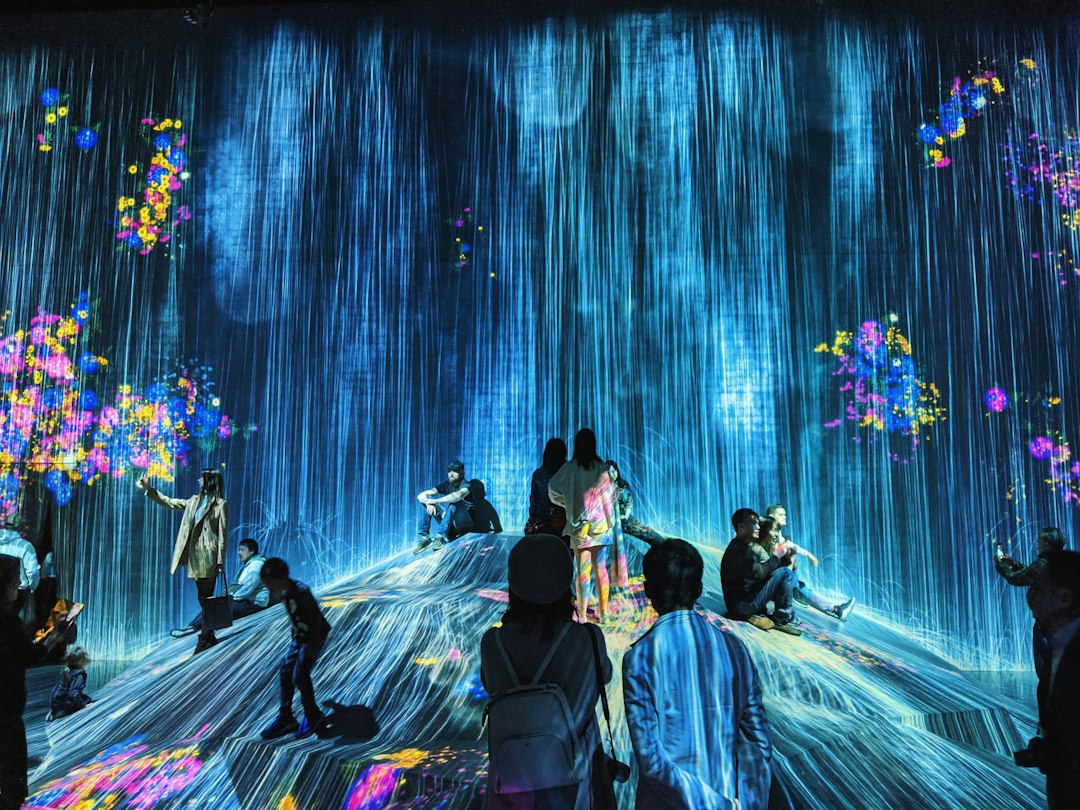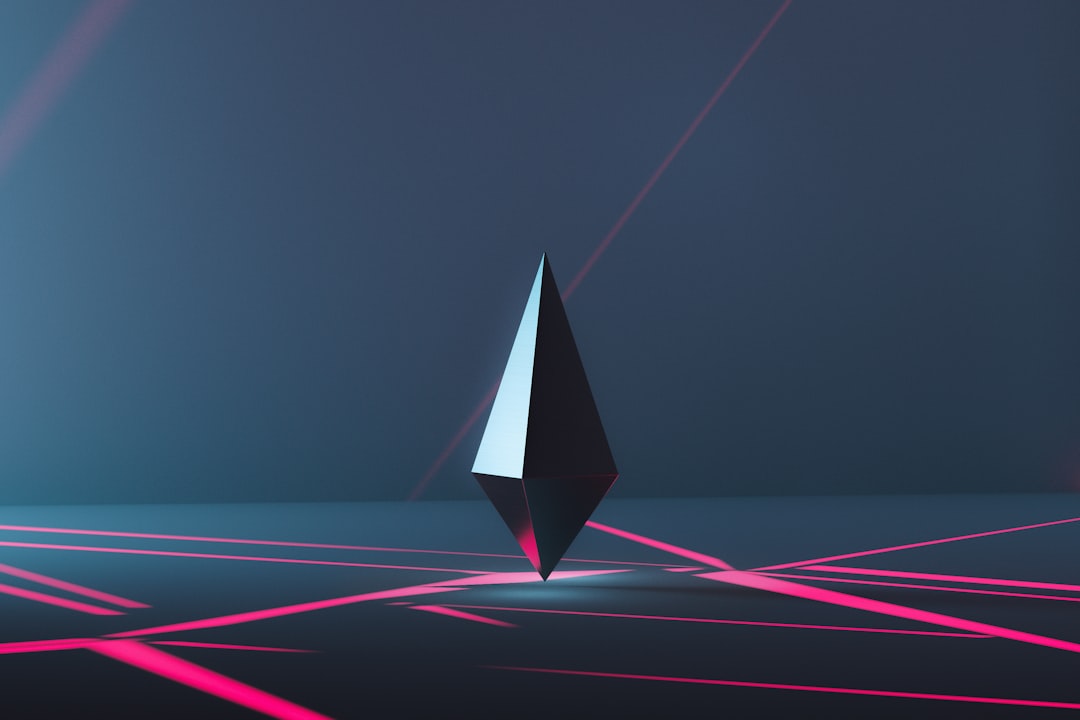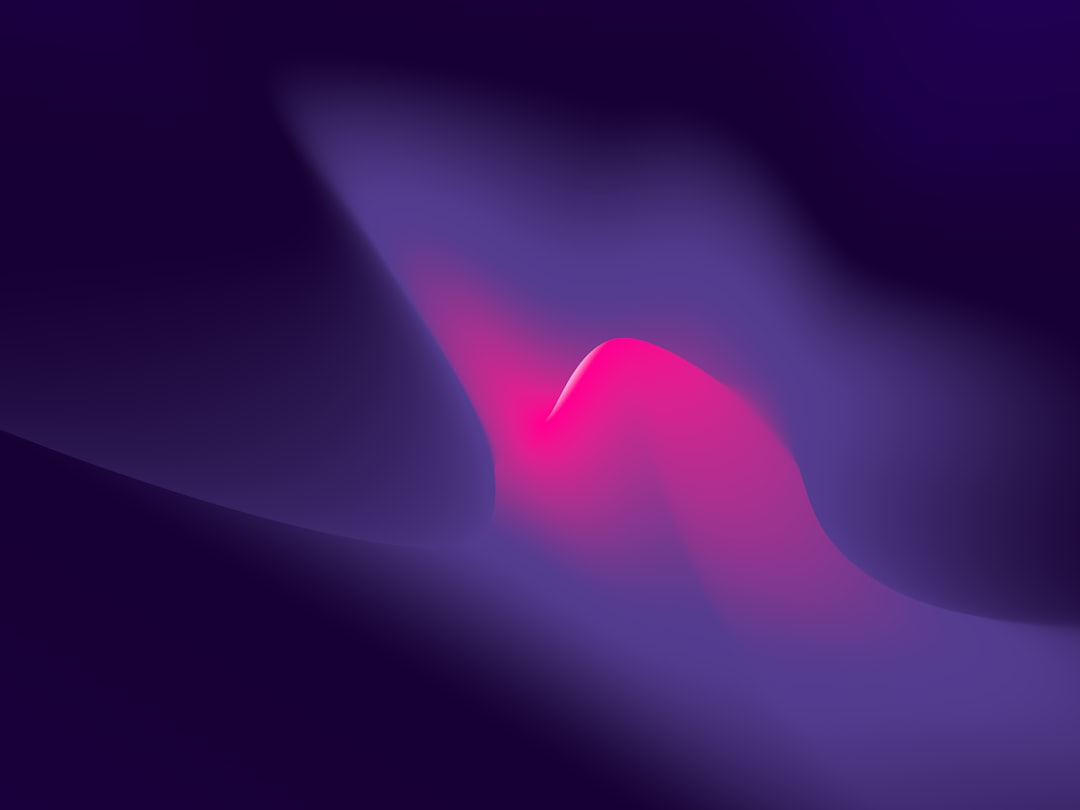Welcome to the exciting world of cryptocurrency and blockchain technology! In recent years, these innovative concepts have captured the attention and imagination of people all over the globe. With their potential to revolutionize various industries, it’s no wonder that the art world has also been greatly influenced by this digital phenomenon.
Crypto art, also known as digital art or blockchain art, has emerged as a fascinating and rapidly evolving field within the realm of art. It combines traditional artistic expressions with cutting-edge technology, creating a unique and immersive experience for artists and collectors alike.
But what exactly is crypto art? Simply put, it refers to artwork that is digital in nature and utilizes blockchain technology for its creation, distribution, and ownership. Unlike traditional artwork that can be physically displayed, crypto art exists in the form of digital files, often accompanied by a unique digital signature called a non-fungible token (NFT).
One of the defining characteristics of crypto art is its decentralized nature. By utilizing blockchain technology, artists have the ability to bypass traditional intermediaries such as galleries and auction houses, allowing them to directly engage with their audience and retain greater control over their creations.
The role of technology in shaping the art industry cannot be overstated. Through the use of blockchain, artists are able to establish transparency, immutability, and traceability in their artwork. This has immense implications for provenance and authenticity, as every transaction and ownership change is recorded on the blockchain, providing a secure and verifiable history for each piece.
While crypto art presents numerous benefits for artists and collectors, it also comes with its own set of challenges. As the art world adjusts to this digital paradigm shift, questions surrounding intellectual property rights, copyright infringement, and the environmental impact of blockchain technology have emerged.
Nevertheless, the potential for innovation in the intersection of technology and creativity is truly remarkable. The introduction of NFTs has opened up new possibilities for artists to monetize their work, explore new revenue streams, and reach a global audience like never before. The art market is undergoing a transformative phase, and the future of crypto art holds immense promise.
In the following sections of this blog post, we will delve deeper into the definition and unique characteristics of crypto art, examine the role of technology in shaping the art industry, explore the benefits and challenges it presents for artists and collectors, and analyze the impact of blockchain on provenance and authenticity. We will also take a closer look at the emergence of NFTs and their implications for the art world. So, let’s embark on this exciting journey together and explore the fascinating world of crypto art!
Definition of Crypto Art and Its Unique Characteristics
Cryptocurrency and blockchain technology have revolutionized various industries, and the art world is no exception. One fascinating aspect that has emerged from this intersection is the concept of crypto art. So, what exactly is crypto art?
At its core, crypto art refers to digital artworks that are created, bought, and sold using cryptocurrencies, primarily leveraging blockchain technology. This means that instead of physical paintings or sculptures, crypto art exists solely in the digital realm. It encompasses a wide range of mediums, including digital paintings, animations, virtual reality experiences, and even music.
One of the unique characteristics of crypto art lies in its ability to be tokenized. Through the use of non-fungible tokens (NFTs), artists can assign ownership rights and authenticate their digital creations. NFTs are unique tokens that are indivisible and cannot be exchanged on a one-to-one basis like cryptocurrencies such as Bitcoin or Ethereum. Instead, they represent a specific piece of artwork or digital asset and are stored on a blockchain, providing a transparent and immutable record of ownership.
This tokenization enables artists to establish scarcity and provenance, attributes that have traditionally been crucial in the art market. By creating limited edition or one-of-a-kind digital artworks, artists can generate a sense of exclusivity and value, similar to the world of physical art. Additionally, the transparent nature of blockchain technology allows for easy verification of authenticity, combating issues like forgery and counterfeit art.
Furthermore, crypto art introduces a new level of accessibility and democratization in the art world. With traditional art, barriers such as high costs, limited visibility, and gatekeepers often restrict artists from reaching a wider audience. However, crypto art allows artists to instantly showcase their work to a global audience, eliminating the need for intermediaries like galleries or auction houses. Artists can directly connect with collectors, enthusiasts, and supporters from around the world, fostering a more inclusive and decentralized art community.
Moreover, the digital nature of crypto art opens up endless possibilities for creativity. Artists can experiment with interactive elements, dynamic visuals, and even incorporate smart contracts, enabling programmable and self-executing features within their artworks. This fusion of technology and art encourages artists to explore innovative ways of expression, challenging traditional boundaries and norms.
In this rapidly evolving landscape, crypto art has sparked a wave of curiosity and excitement, captivating both artists and collectors alike. It presents an opportunity for the art world to reimagine itself, embracing the potential of technology and the ever-expanding digital realm. As boundaries blur and new possibilities emerge, the future of crypto art holds immense promise for innovation and the exploration of the intersection between technology and creativity.
However, crypto art allows artists to instantly showcase their work to a global audience, eliminating the need for intermediaries like galleries or auction houses.
Exploring the Role of Technology in Shaping the Art Industry
When we talk about art, we often think of traditional mediums like paintings, sculptures, and photography. However, in today’s digital age, technology is playing a significant role in shaping the art industry in ways we could have never imagined. With the rise of cryptocurrency and blockchain technology, a new form of art known as crypto art has emerged, revolutionizing the way artists create and sell their work.
Technology has provided artists with a whole new set of tools and platforms to express their creativity. With the advent of digital drawing tablets, sophisticated software, and even virtual reality, artists can now explore endless possibilities and push the boundaries of their imagination. This has led to the birth of unique art forms that blend traditional techniques with digital innovation, creating mesmerizing pieces that captivate and inspire.
But the impact of technology on the art industry goes beyond the creative process. The introduction of blockchain technology has brought about a fundamental shift in how art is bought, sold, and valued. Blockchain allows for the creation of digital certificates of authenticity, known as non-fungible tokens (NFTs), which are unique and cannot be replicated. This has solved one of the longstanding challenges in the art world – the issue of provenance and authenticity.
Artists can now tokenize their work as NFTs, ensuring that each piece is verifiably authentic and traceable throughout its lifetime. This has opened up a new world of opportunities for artists, as collectors can now confidently purchase digital artworks knowing that they are acquiring a genuine piece. Additionally, artists can also receive royalties each time their work is resold, providing them with a sustainable income stream and fair compensation for their talent.
Another way technology is shaping the art industry is through the democratization of art. In the past, only a select few had access to the art world – galleries, museums, and wealthy collectors dictated what was considered valuable and worthy of recognition. However, with the rise of crypto art platforms and online marketplaces, artists from all walks of life now have the chance to showcase their work to a global audience.
This newfound accessibility is breaking down barriers and creating a more inclusive art world, where talent and creativity are the primary currencies. Artists no longer need to rely solely on traditional gatekeepers to gain recognition and success. Instead, they can harness the power of technology to connect directly with their audience, build a community, and cultivate their own unique brand.
As we delve deeper into the intersection of technology and creativity, the possibilities for innovation seem boundless. The art industry is experiencing a digital renaissance, where traditional art forms are blending seamlessly with cutting-edge technology to create something truly extraordinary. It is an exciting time to be an artist, collector, or simply an enthusiast, as we witness the evolution of an age-old industry into uncharted territory.
So, let us embrace this wave of technological disruption with open minds and open hearts. Let us explore the endless possibilities that lie ahead, as we navigate the uncharted waters of crypto art and its impact on the art world. Together, we can shape the future of art, where creativity knows no bounds and innovation knows no limits.
In the past, only a select few had access to the art world – galleries, museums, and wealthy collectors dictated what was considered valuable and worthy of recognition.
The benefits and challenges of crypto art for artists and collectors
As we delve further into the fascinating world of crypto art, it’s important to recognize the multitude of benefits and challenges that this emerging form of artistic expression presents for both artists and collectors. The intersection of technology and creativity has given rise to unique opportunities, but it also brings forth a set of complexities that demand careful consideration.
One of the most significant advantages of crypto art is its potential to revolutionize the traditional art market. By leveraging blockchain technology, artists gain greater control over their work, enabling them to authenticate and monetize their creations without relying on intermediaries. This newfound autonomy empowers artists to connect directly with their audience, paving the way for more equitable compensation and recognition.
Furthermore, crypto art allows for the creation of digital scarcity, a concept that was previously inconceivable in the digital realm. Through the use of non-fungible tokens (NFTs), artists can assign unique properties to their digital assets, establishing a sense of rarity and exclusivity. This opens up a whole new world of possibilities, as scarcity has long been a driving force in the art market, and now it can be seamlessly translated into the digital realm.
For collectors, crypto art presents an exciting opportunity to engage with the artistic community in new and unconventional ways. With the advent of NFTs, collectors can now own and trade digital artworks, providing a level of accessibility and liquidity that was previously unimaginable. Additionally, the transparency and immutability offered by blockchain technology ensure a verified and tamper-proof record of ownership, eliminating concerns of counterfeit or forged artwork.
However, alongside these benefits, there are also challenges that must be confronted. One of the primary concerns surrounding crypto art is the environmental impact of blockchain technology. The energy consumption associated with crypto mining has raised valid questions about the sustainability of this new art form. As the art world grapples with these concerns, it is crucial for artists, collectors, and blockchain enthusiasts to explore and implement eco-friendly solutions that mitigate the environmental footprint of crypto art.
Another challenge lies in the evolving nature of the crypto art market itself. With the rapid advancements in technology and the influx of new artists and collectors, the landscape can be overwhelming and difficult to navigate. As artists embrace this new medium, they must familiarize themselves with the intricacies of blockchain technology, smart contracts, and marketplaces that facilitate the sale and acquisition of crypto art. Similarly, collectors must adapt to the changing dynamics of art ownership, as digital assets introduce novel considerations and potential risks.
In light of these challenges, it is essential to approach the world of crypto art with an open mind and a willingness to explore the possibilities it presents. The art industry has continually evolved throughout history, and embracing technological advancements like crypto art allows us to push the boundaries of creativity and expression even further. By embracing the potential of blockchain technology and addressing its challenges, we can foster an environment that nurtures innovation and inclusivity in the art world.
Similarly, collectors must adapt to the changing dynamics of art ownership, as digital assets introduce novel considerations and potential risks.
Examining the Impact of Blockchain on Provenance and Authenticity in the Art Market
In the realm of traditional art, provenance and authenticity have long been significant concerns. Art collectors, historians, and enthusiasts have dedicated countless hours and resources to ascertain the origins and legitimacy of renowned masterpieces. However, the advent of blockchain technology has introduced a revolutionary solution to these age-old challenges, reshaping the art market in astonishing ways.
Blockchain, the underlying technology behind cryptocurrencies like Bitcoin, is a decentralized and transparent ledger that records transactions across multiple computers. Its unique characteristics of immutability, transparency, and traceability have found a perfect fit in the art industry, addressing the perennial issues of provenance and authenticity.
Traditionally, provenance has relied on a chain of custody, documentation, and expert opinions to establish the history and ownership of an artwork. Unfortunately, this process is often susceptible to fraud and manipulation, making it difficult to fully trust the information provided. However, with blockchain, each transaction, from the creation of the artwork to its subsequent sales and transfers, is recorded in a tamper-proof manner, leaving a permanent and verifiable trail.
By utilizing blockchain, artists and collectors can create digital certificates of authenticity and link them to their artworks as non-fungible tokens (NFTs). These tokens act as digital representations of the artwork, uniquely identifying and verifying its ownership and provenance. This not only provides a robust method of establishing authenticity but also enables artists to track the sales and ownership history of their creations in real-time.
The impact of blockchain on provenance and authenticity in the art market is profound. It brings transparency and trust to a domain that has long been plagued by forgeries, fakes, and unscrupulous practices. Collectors can confidently invest in artworks, knowing that their provenance is legitimate and that the artwork they possess is genuine. Artists, on the other hand, can protect their intellectual property rights, receive fair royalties for subsequent sales, and gain recognition for their work.
Moreover, blockchain technology opens up possibilities for new forms of art that were previously inconceivable. The digital nature of NFTs allows artists to explore mediums like digital art, virtual reality experiences, and interactive installations with ease. This blurs the boundaries between the physical and digital art worlds, offering a myriad of opportunities for innovation and creativity.
However, while the impact of blockchain on provenance and authenticity is undoubtedly transformative, it is essential to acknowledge that it is still a relatively nascent technology. As with any emerging field, challenges and limitations exist. Questions regarding the storage and preservation of digital artworks, the environmental impact of blockchain, and the potential for monopolistic control in the art market arise.
Nevertheless, the exploration and adoption of blockchain technology in the art industry signal a thrilling shift towards a more transparent, inclusive, and secure future. By embracing the potential of blockchain, the art world can unlock new avenues for artistic expression, redefine established norms, and democratize access to art.
In the next part, we will delve into NFTs, the new frontier of crypto art, and explore their implications for the art world. Buckle up for an exhilarating journey that merges technology and creativity in unprecedented ways!
Collectors can confidently invest in artworks, knowing that their provenance is legitimate and that the artwork they possess is genuine.
NFTs: The New Frontier of Crypto Art and Its Implications for the Art World
As we delve further into the realm of crypto art, we encounter the fascinating world of Non-Fungible Tokens (NFTs). These digital assets, represented on the blockchain, have taken the art world by storm, revolutionizing the way we perceive, create, and trade art. NFTs have opened up a whole new frontier of possibilities, stirring excitement and curiosity within the art community.
So, what exactly are NFTs and why are they causing such a stir? Well, NFTs are unique digital tokens that represent ownership or proof of authenticity of a particular piece of digital or physical art. Unlike cryptocurrencies such as Bitcoin or Ethereum, which are fungible and can be exchanged for one another, NFTs are indivisible, making each token distinct and irreplaceable.
The implications of NFTs for the art world are vast and transformative. One of the most significant impacts is the ability for artists to directly monetize their digital creations. NFTs enable artists to tokenize their work, minting it as a unique digital asset that can be bought, sold, and traded on various online platforms.
This newfound opportunity empowers artists to take control of their art, bypassing traditional intermediaries like galleries and auction houses. Artists can now connect directly with their audience and collectors, establishing a more intimate and transparent relationship. This shift has the potential to democratize the art world, giving emerging artists the chance to gain recognition and financial support based on the merit of their work.
For collectors, NFTs offer a novel way to engage with and support artists. By purchasing an NFT, collectors not only obtain a digital artwork but also become part of its story. The ownership and provenance of the artwork are permanently recorded on the blockchain, providing a transparent and immutable history of its journey. This enhances the value and authenticity of the artwork, addressing long-standing challenges in the art market.
However, as with any emerging technology, NFTs also present challenges and questions that need to be addressed. The environmental impact of blockchain technology, particularly in terms of energy consumption, raises concerns among those conscious of sustainability. Additionally, issues surrounding copyright infringement and intellectual property rights within the digital realm require careful consideration.
Nevertheless, the possibilities offered by NFTs are undeniably exciting. They have sparked a wave of experimentation and creativity, pushing the boundaries of what can be considered art. From digital paintings to virtual reality experiences, NFTs offer a platform for artists to explore new mediums and concepts, encouraging a cross-pollination of ideas and a blending of traditional and digital art forms.
So, as we venture into this new frontier of crypto art, the potential for innovation at the intersection of technology and creativity is immense. We stand at the precipice of a digital renaissance, where art is no longer confined to physical spaces but can be experienced and appreciated by anyone with an internet connection.
As the art world continues to adapt and embrace the possibilities of blockchain technology and NFTs, it is crucial to approach this frontier with an open mind. We must explore, question, and collaborate to ensure that the art world evolves in a way that benefits artists, collectors, and art enthusiasts alike. Let us embrace this new chapter of crypto art and unlock the vast potential it holds for the future.
Unlike cryptocurrencies such as Bitcoin or Ethereum, which are fungible and can be exchanged for one another, NFTs are indivisible, making each token distinct and irreplaceable.
The future of crypto art and the potential for innovation in the intersection of technology and creativity
As we conclude this exploration of crypto art and its impact on the art world, it is impossible not to feel a sense of excitement and wonder about the future. The intersection of technology and creativity has always been a fertile ground for innovation, and crypto art is no exception.
The potential for growth and transformation in this space is immense. As more artists and collectors embrace the possibilities offered by blockchain technology, we can expect to see a continued surge in the popularity of crypto art. This form of art challenges traditional notions of ownership, provenance, and authenticity, forcing us to question established norms and reimagine the art industry.
One of the most exciting aspects of crypto art is its ability to democratize the art world. The traditional art market has long been dominated by gatekeepers and intermediaries, making it difficult for emerging artists to break through. However, with crypto art, artists have the opportunity to connect directly with their audience, bypassing galleries, dealers, and auction houses.
Furthermore, crypto art opens up new possibilities for monetization. Artists can now create and sell digital art pieces, allowing for greater accessibility and affordability. The use of non-fungible tokens (NFTs) has revolutionized the way artists can monetize their work, providing a new revenue stream and a means to establish a sustainable career in the art industry.
But the potential for innovation doesn’t stop at democratization and monetization. The integration of blockchain technology and smart contracts in crypto art has the potential to revolutionize how artists are compensated for their work. Imagine a world where artists receive royalties every time their art is sold or traded, ensuring a continuous stream of income throughout their career.
Additionally, the use of blockchain technology in crypto art has the potential to solve one of the biggest challenges facing the art industry: provenance and authenticity. The immutable and transparent nature of blockchain allows for a secure and tamper-proof record of an artwork’s history, ensuring that collectors can have confidence in the authenticity of their purchases.
As we look to the future, it is clear that crypto art is just the beginning. The exploration of blockchain technology and its applications in the art world has only scratched the surface of what is possible. We can expect to see further innovation, experimentation, and collaboration as artists, technologists, and collectors continue to push the boundaries of what is considered art.
So, whether you are an artist looking to explore new avenues for creative expression, a collector seeking unique and groundbreaking pieces, or simply someone curious about the intersection of technology and creativity, the world of crypto art offers a multitude of opportunities and possibilities.
In conclusion, the future of crypto art is bright and full of potential. It challenges us to rethink established norms, democratizes the art world, and opens up new avenues for monetization and compensation for artists. The integration of blockchain technology ensures transparency, provenance, and authenticity, providing collectors with confidence in their purchases. As we continue to explore the possibilities of this exciting realm, we can only imagine the innovations and transformations that lie ahead. So, let’s embrace the future of crypto art and embark on this journey of exploration and creativity together.





